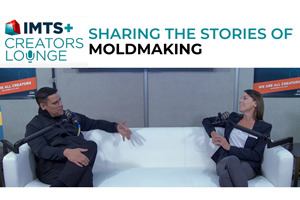Stretching the Direct Mail Envelope
Direct marketing approaches for B-to-B marketers.
These days the world of direct mail has morphed into direct marketing and incorporates a host of services, including e-mail marketing, telemarketing and search engine marketing, in addition to the more traditional forms of direct mail. In fact, a recent survey by Mac McIntosh of the Sales Lead Report showed that among B-to-B marketers, direct mail was chosen as the most important direct marketing activity for sales lead generation by only 22.3% of respondents. 27.1% preferred telemarketing as their top choice; 26.6% chose e-mail; and 12.2% chose SEO (search engine optimization).
But despite all of the advances in technology and sophistication of execution, there are basically four things you can hope to accomplish through direct mail or marketing: 1) sell something directly, 2) sell something indirectly, 3) inform or educate an audience or 4) solicit or ask for something in return.
Steps for Your Direct Mail Effort
We’re all familiar with direct selling efforts, these promotions must incorporate the entire selling process into a single step. But for most B-to-B marketers, many of whom deal with a sales process that extends over months if not years, other approaches tend to be more productive, and can be enlisted to help achieve certain specific tasks.
Indirect selling techniques, for example, are often used as conversation starters. Often utilizing purchased lists of new, unknown contacts, such efforts create opportunities by generating inquiries. Informational pieces are frequently used to keep a company fresh in the minds of existing customers and prospects, and solicitation pieces are used for everything from conducting surveys to registering entrants for a booth drawing at a trade show.
What You Want to Accomplish
Thus, the first step in any direct mail or marketing effort is deciding what you want to accomplish, given your particular situation and your overall marketing strategy. An objective of increasing sales is not focused enough: you need to consider where those sales are coming from and how you’re going to finagle them. Is your marketing strategy to build sales through regional rep organizations? Perhaps it makes sense to generate leads for these reps by mailing to purchased lists in specific target markets. If you believe that your current customer base does not appreciate the entire scope of your services, or that prospects don’t know you well enough, a newsletter or series of application mailers may do the trick. Conversely, if you think you don’t know a market well enough, or are in development of a new product or process, soliciting information through a survey or inviting industry experts to participate in a roundtable discussion cannot only help your cause, but also can serve to make you better known.
As with any marketing situation, the logic of your needs analysis will often dictate the appropriate tactics. Adjusting your mindset to the possible also can open up the creative process. Many people automatically assume that direct mail—either snail or electronic—requires expensive, high production-value creative. But maybe you don’t need that fancy, four-color self-mailer with the special die-cut pop-up center that shows a detailed 3-D rendering of your plant and all of your equipment. Maybe a simple, introductory letter briefly outlining your capabilities and requesting an opportunity to quote will do just as well. If you are a small start-up and working regionally with a small base, this could definitely be a winning strategy: letters can be sent out in small enough batches to allow direct telephone follow-up; the campaign can be geared to your need for business; and the cost is almost nil.
But again, it depends on your situation. If you are a large multi-national rolling out a major new product launch, such an approach would not only be impractical, it could even backfire. What seems personal and dignified from one organization can seem cheap and uncredible from another.
Who You Want to Reach
Who you’re addressing is another important consideration—not only in terms of the function and position of the addressees, but also in terms of list quantity and quality.
A purchased list of new names should be messaged differently from a current prospects list, which is already familiar with your name. Existing customers—very frequently ignored and perennially the best source for additional business—should be treated differently as well. Former customers are another category (perhaps using a “hat in hand” theme).
How You Want to Reach Them
But again, a standard mailer is not always de rigueur. There was a case where a molder had for years received a lot of business from a single large manufacturer in a neighboring state. Somehow, quality/personality problems had caused a rift and the business was lost. Several years later, after major upgrades on the part of the molder, an attempt was made to regain the business. But old impressions die hard and they were unable to get a hearing. Reasoning that they could get as much business from this one former customer as they could from a raft of new ones, one creative solution was to invest in a radical “direct mail” concept and trumpet the company’s new capabilities on a billboard along the highway the manufacturer’s purchasing agent took to work.
Another case of a big effort being focused on a small audience involved the manufacturer of custom cases trying to get his products included in an exclusive national chain. Research found that the buying team for this chain consisted of only eight key executives. The week before their next meeting, customized cases were sent to each of these individuals containing a tape recorder. On the tape was the music from “Mission Impossible” and a narrated script inviting them to, “examine the case before you …”
A discrete parts manufacturer we know has good success mailing actual parts to prospects, packaged in mailers that tout the specific benefits of his process. Other forms of “dimensional mail” can be equally effective.
Sending solid objects electronically is rather problematic, of course, but e-mailers offer another dimension to direct marketing efforts that makes them very attractive—click-through response. Not only can recipients (who should ALWAYS be selected on an opt-in only basis) respond immediately to your offer, they also can find additional information and even propel themselves along your sales process, provided your Web site is equal to the task.
Fundamentals of Success
But regardless of the means you choose for your direct mail/marketing efforts, the fundamentals for success remain the same: know exactly what you want to accomplish; target your piece to an appropriate audience; tell your story clearly and succinctly in both words and graphics; speak to the needs of the audience, not your own; repeat as needed and take nothing for granted.
Related Content
IMTS+ Creators Lounge: Sharing the Stories of Moldmaking
Founder/CEO of Industrial Strength Marketing James Soto welcomed MoldMaking Technology editorial director Christina Fuges into the IMTS+ Creators Lounge to talk about sharing the stories of manufacturing using social media and digital tools.
Read MoreSodick Partners with Merrifield Machinery Solutions in Eastern Michigan
Merrifield is welcomed under the umbrella of Sodick machine tool distributors, bringing customers more than 15 years of experience in machine tool sales and support.
Read MoreMMT Chats: Mold Builder Shares “Raw and Real” Social Media Strategy
MoldMaking Technology Editorial Director Christina Fuges sits down with Murphy Forsyth, GM – Injection Molding and Director Of Marketing for Zero Tolerance LLC in Clinton Township, MI.
Read MoreThe Role of Social Media in Manufacturing
Charles Daniels CFO of Wepco Plastics shares insights on the role of social media in manufacturing, how to improve the “business” side of a small mold shop and continually developing culture.
Read MoreRead Next
How to Use Continuing Education to Remain Competitive in Moldmaking
Continued training helps moldmakers make tooling decisions and properly use the latest cutting tool to efficiently machine high-quality molds.
Read MoreAre You a Moldmaker Considering 3D Printing? Consider the 3D Printing Workshop at NPE2024
Presentations will cover 3D printing for mold tooling, material innovation, product development, bridge production and full-scale, high-volume additive manufacturing.
Read MoreReasons to Use Fiber Lasers for Mold Cleaning
Fiber lasers offer a simplicity, speed, control and portability, minimizing mold cleaning risks.
Read More















